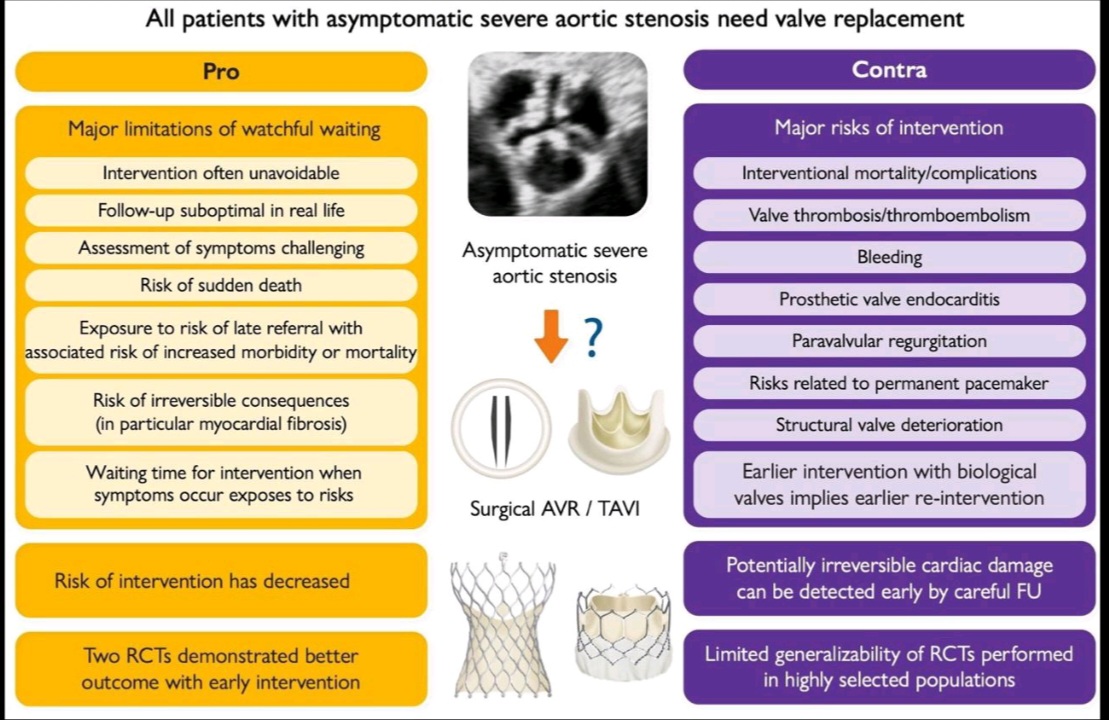Current guidelines admit, however, that the management of patients with asymptomatic AS (including a normal exercise test) and normal left ventricular function remains controversial. Decision-making requires careful weighing of risk and benefit. In this regard, the fact that catheter interventional treatment of AS is rapidly evolving and recent data demonstrate that the risk of both, surgical AVR and transcatheter aortic valve implantation (TAVI) have markedly decreased over the years has an obvious impact as this may change the threshold to intervene in asymptomatic patients when weighing risk vs. potential benefit. On the other hand, the complexity of long-term planning considering the consequences for later re-interventions, access to coronary arteries after TAVI, and other aspects have been recognized. New important data including randomized controlled trials comparing watchful waiting vs. early surgery in asymptomatic AS have also been provided. Thus, it appears timely to revisit the pro and cons of whether all patients with asymptomatic severe AS need a valve replacement.

Comments
Post a Comment
Drop your thoughts here, we would love to hear from you